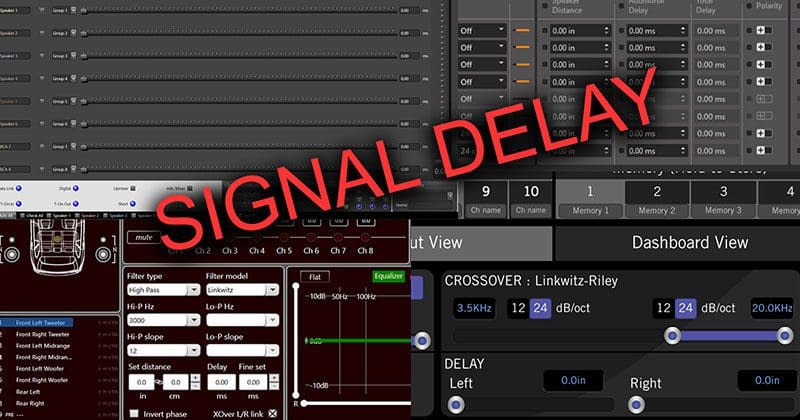When it comes to upgrading a car audio system with a digital signal processor, you’ll typically hear about a discussion of signal delay. Maybe people refer to this as time alignment or setting the delays. No matter what term is used, understanding the benefits and drawbacks of this technology is crucial to creating a car audio system that sounds amazing.
Let’s Talk About Stereo
Three crucial factors are required to recreate a coherent and accurate stereo imaging from a sound system. First, the frequency response of the left and right speakers needs to be the same. If there are differences, sounds that are louder in one channel will appear to move toward that corresponding speaker. Second, and this is an extension of the first, the volume level of both speakers needs to be the same. Finally, and most relevant to our discussion of delay, the sound from each speaker needs to arrive at the listening position simultaneously.
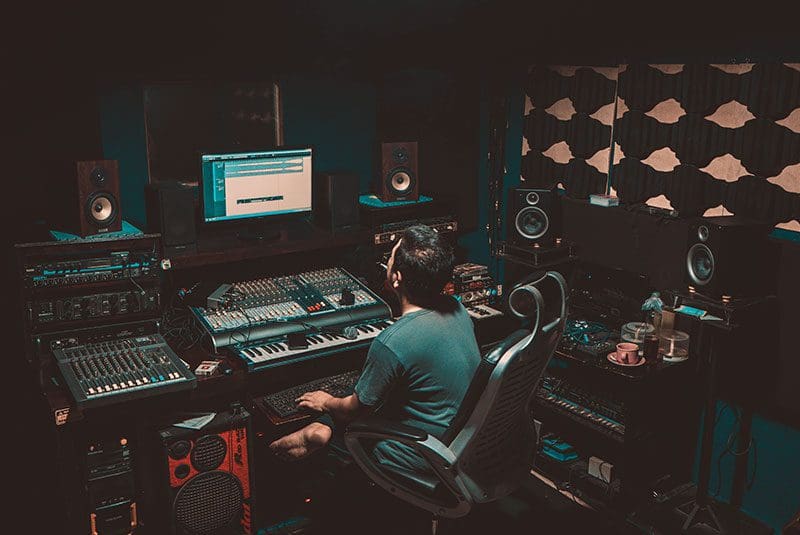
In a home audio system, we can move our chair or change seats on the couch to place ourselves in a position that’s equidistant from each speaker. If the speakers are similar distances to the rear and side walls, then their frequency response should be similar. The result is a listening experience where sounds appear to emanate from the space between those speakers. We call the plane from which the sounds come from the soundstage. The accuracy with which each performer and instrument are rendered on the soundstage is described as imaging. Better imaging means that each voice or instrument is rendered with more precision and detail, making the sounds seem more realistic. If a recording captured the reflections in the room, then an audio system with good staging and imaging can reproduce those sounds and provide a sense of space.
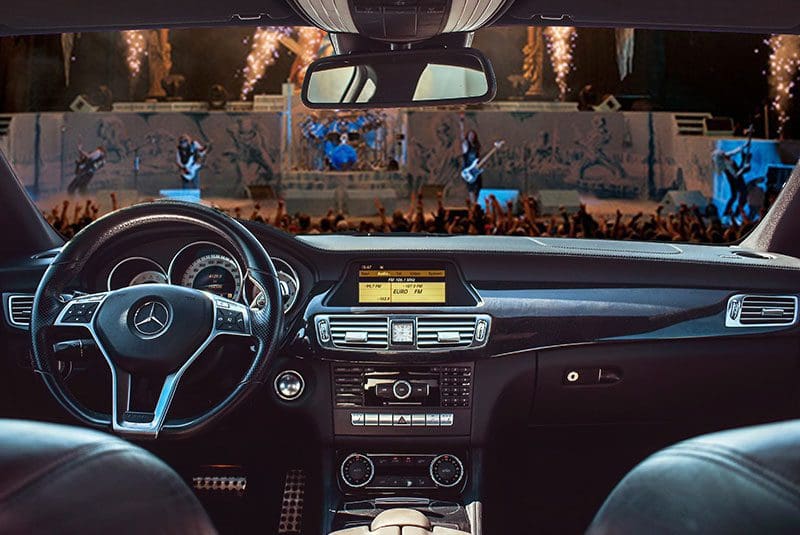
What Is Signal Delay?
If we are sitting between two speakers, then the distances to each speaker are equal. The problem is, we are talking about car audio systems. When we’re driving, we sit on the left side of the vehicle, which puts us much closer to the left-side speakers. This results in those speakers seeming louder than the right-side drivers and, crucial to this discussion, we hear sounds from the left speakers before those coming from the right.
In terms of our soundstage, when the perceived output level of the speakers is different, and we hear one speaker long before the other, the soundstage will be compressed into the very left side of the vehicle. This doesn’t sound very realistic.
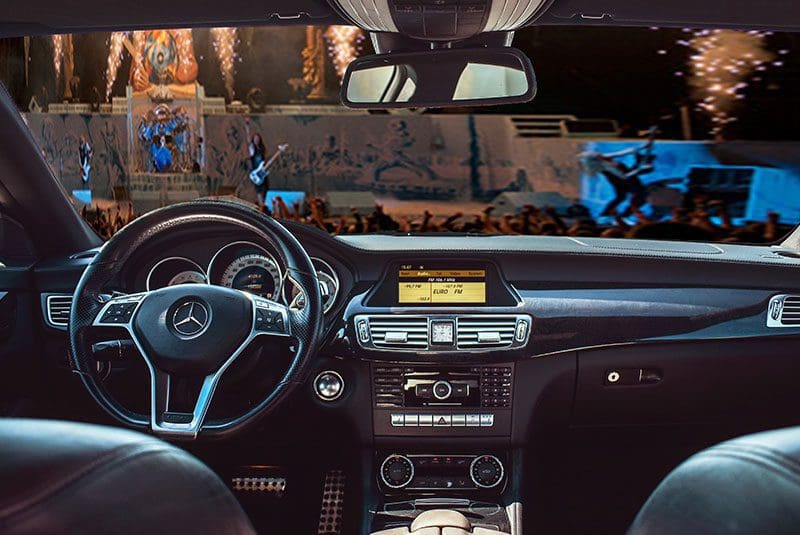
Even modestly priced car audio DSPs and many premium radios have the ability to add delay to the output of one or more channels. Through various configuration and calibration methods, these adjustments add delay to the signals going to speakers in your audio system. Let’s say you have a simple three-way system with tweeters in the sail panels, woofers in the doors, and a subwoofer in the trunk. You will hear the left tweeter before any other speaker because it’s the one closest to you. Next, you’ll hear the left woofer. This is followed by the right tweeter, then the right woofer, and finally, the subwoofer. Uncalibrated, you end up with a blurry, unfocused mess. When the technician calibrating your processors adds delays to all the speakers, the sound from each arrives at the listening position simultaneously.
Speaker Delay Settings
Getting the delay settings correct is not only important to make it seem as though we are sitting exactly between the speakers, but it also affects the frequency response of the audio system. If there are effective pathlength differences between the left and right speakers, some sounds will add constructively, and some will add destructively. This frequency response issue is called comb filtering, and it’s nearly impossible to EQ out of a system.
Inexpensive to moderately priced processors usually have delay adjustments with a resolution of 0.02 milliseconds. That means each step is about 6.8 millimeters or about 0.27 of an inch. Newer processors that use higher sampling rates of 96 kHz can cut those numbers in half. Don’t get hung up on the resolution of the delay setting when purchasing a DSP – it’s more important to set them all properly than to have a little extra resolution.
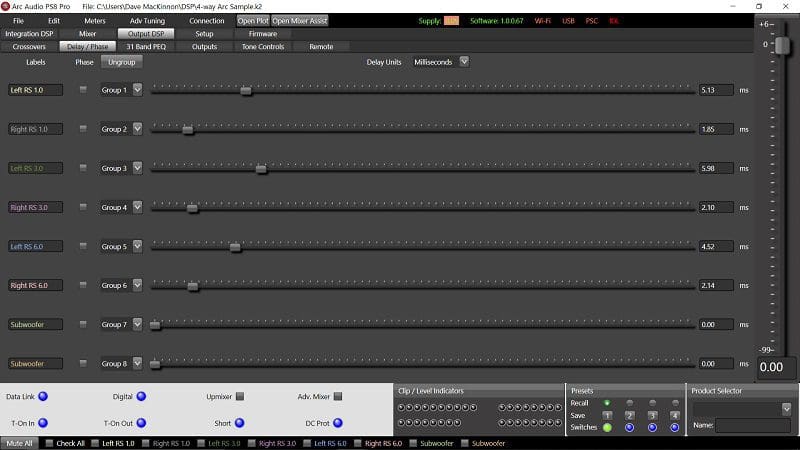
Let’s Talk About Two-Seat Systems
As you can imagine, setting the delays to each speaker in our hypothetical three-way system will, when combined with proper speaker placement and equalization, result in an audio system that sounds amazing. That great sound, however, is only heard in one seat – the driver’s seat. Your passenger will hear almost all of the music coming from the right edge of the vehicle. We call this a one-seat tune.
Audio systems designed to deliver balanced sound from all positions in the vehicle require a different approach. Your installer will need to implement all-pass filters to tame the comb filtering. Ideally, the vehicle should use a processor with an upmixer that extracts mono information from the left and right channels and feeds it to a dedicated center speaker. To my knowledge, there’s only one DSP currently on the market with this type of upmixer.
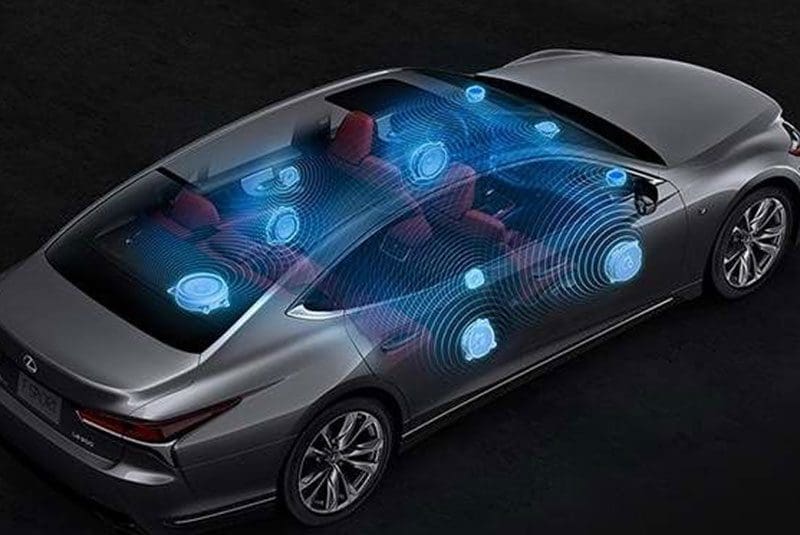
Upgrade your Car Audio System with a Digital Signal Processor
Without a DSP, your technician can use an equalizer or level controls to try to balance the perceived output of the speakers in your vehicle. While this helps create a center image, the focus will be mediocre, and the sounds that are left and right of center will be compressed, stretched and likely blurry. When you add a DSP with a stereo equalizer and signal delay capabilities, then have the system calibrated by a trained professional, your music will sound like you are sitting in your living with natural balance and fantastic realism. Drop by your local specialty mobile enhancement retailer today to audition a digital signal processor and have them upgrade your car audio system.
